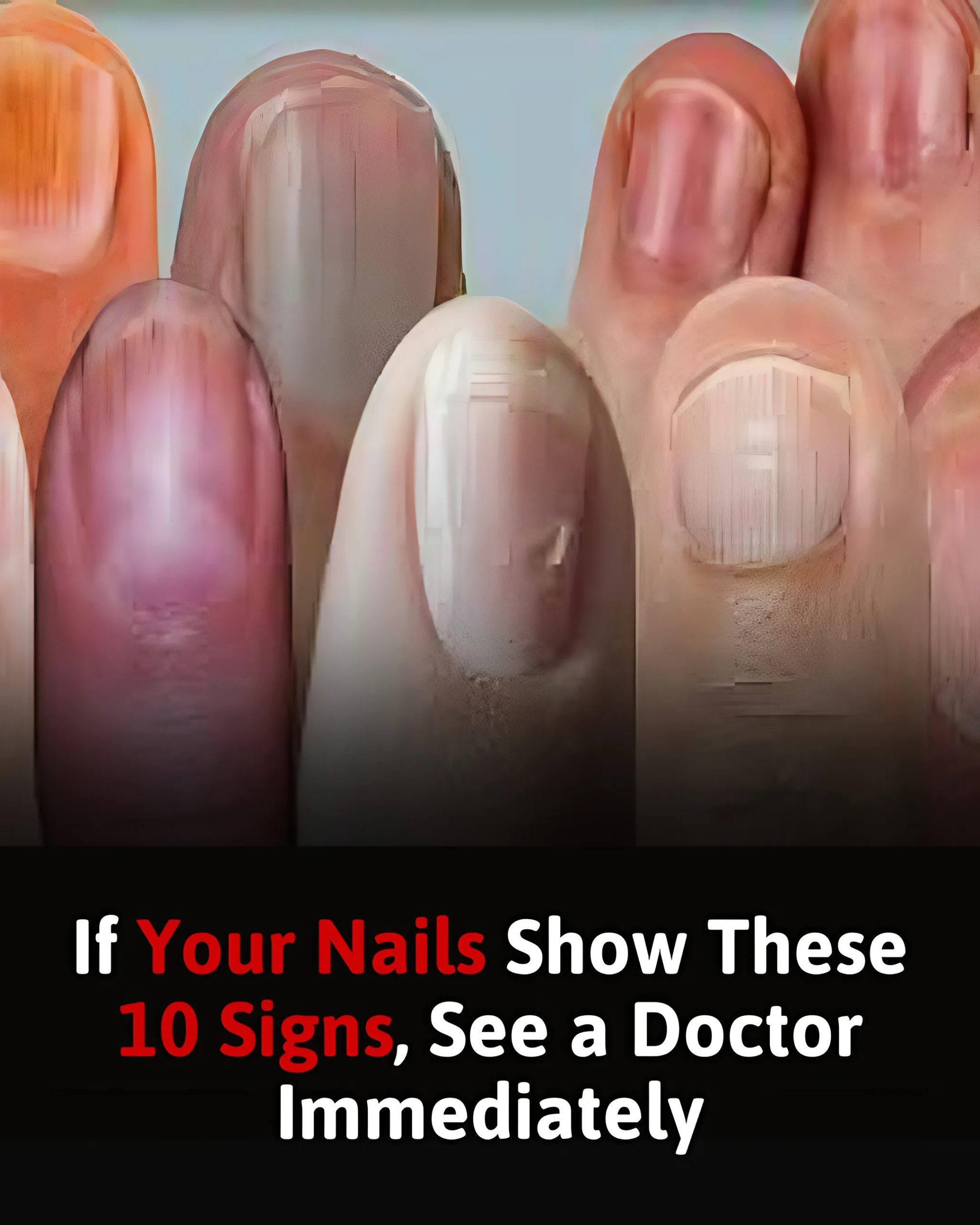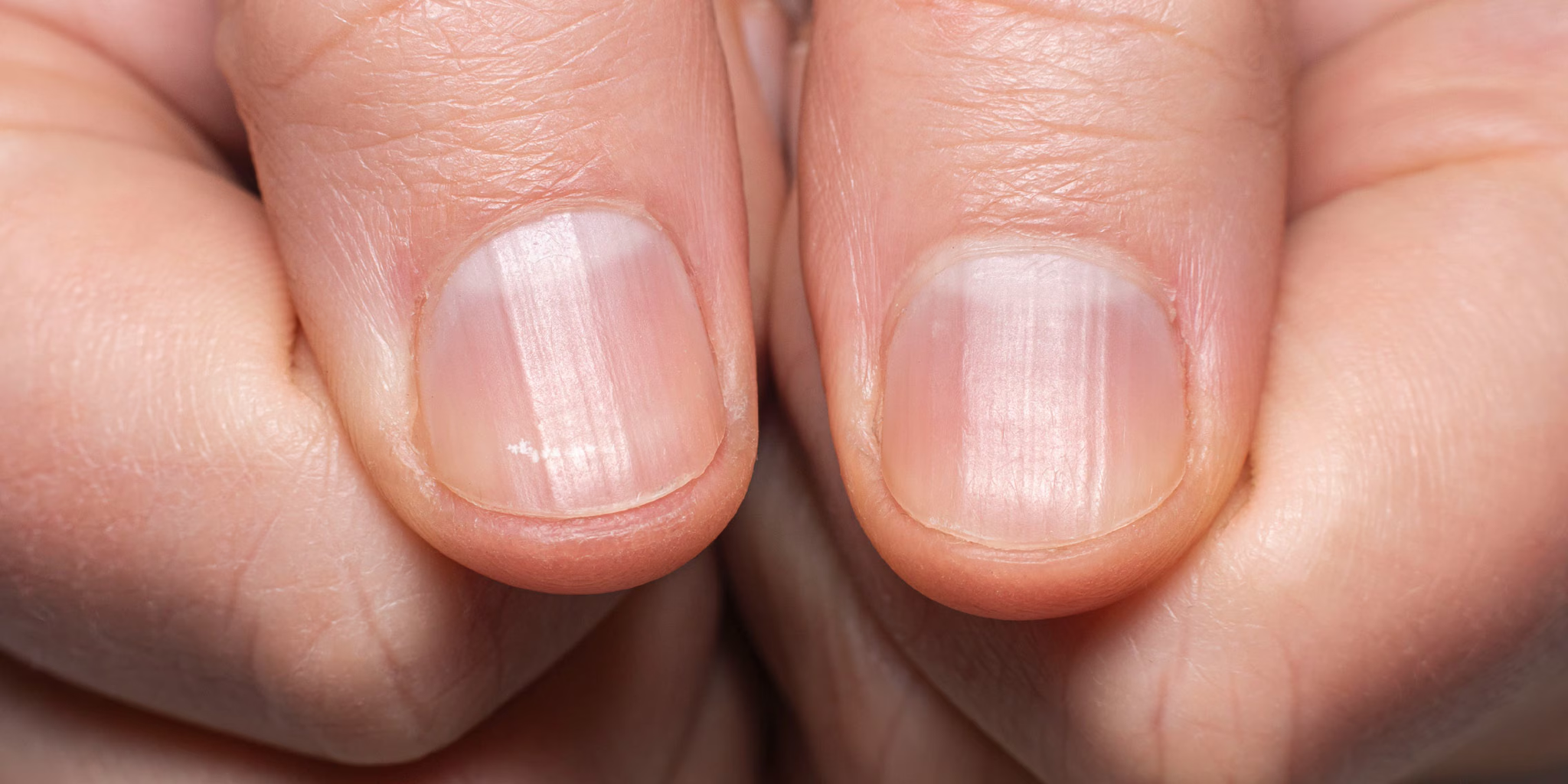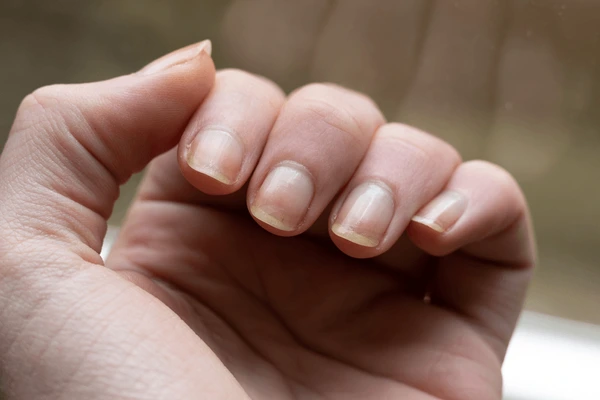
You may not often pay close attention to your fingernails, but they can actually reveal quite a bit about your health. In fact, there are hundreds of medical conditions and illnesses that can lead to noticeable changes in your nails.
Your fingernails can serve as a reflection of your recent health status and physiological imbalances, and they’ve been used as a health indicator for centuries.
While changes in your nails might simply stem from a fungal infection or a minor injury, they can also point to deeper issues involving organs such as the heart, lungs, or liver.
The Half Moons at the Base of Your Nails
Healthy nails typically appear pink with light pink or whitish half moons at the base. According to Dr. L Reed, ND, these half moons are a sign of proper thyroid function.
A missing half moon on any nail could be a sign of a weakened thyroid. Poor thyroid health may result in symptoms such as depression, mood fluctuations, hair thinning, and more.

Nail Texture
When in good health, your nails are smooth and free from grooves, ridges, spots, or discoloration. If you notice changes in your nails’ texture, shape, color, thickness, or overall appearance without a clear reason, it might be time to see a doctor. Here’s what various nail signs may say about your health:
1. Brittle or crumbly nails
Though often caused by aging or frequent exposure to cleaning agents or nail polish, brittle or crumbling nails can also be a sign of a fungal infection, Lichen planus (a skin and oral rash condition), thyroid problems, or psoriasis. In rare instances, it could be linked to reactive arthritis, a painful form of inflammatory arthritis.
2. Discolored nails
- Yellow nails can stem from long-term nail polish use, but may also indicate fungal infections, psoriasis, jaundice due to liver issues, sinus infections, thyroid dysfunction, lung infections, or lymphedema (fluid retention in limbs).
- Green-black nails often suggest a bacterial infection, especially under detached nails.
- Blue or purple nail beds may signal low oxygen levels in the blood.
- Gray nails can be a side effect of certain medications.
- Brown nails might point to thyroid disorders or nutritional deficiencies.
- Half-white at the base and half-brown at the tip could be an indicator of kidney failure, AIDS, or a side effect of chemotherapy.
- White nails might be linked to aging, a fungal infection, or anemia. They can also signal conditions like cirrhosis, kidney or heart failure, diabetes, hyperthyroidism, malnutrition, or occur after chemotherapy.

3. Thickened nails
While thick nails are often a result of fungal infections, they may also be related to psoriasis or reactive arthritis. If they appear yellowish, thick, and grow slowly, they could point to lung conditions.
4. Loose nails
When nails detach from the nail bed, it might be due to trauma or infection, but could also suggest thyroid issues, psoriasis, poor blood circulation, or allergic reactions to medications.
5. Spoon-shaped nails (Koilonychia)
Nails that curve inward like a spoon can indicate iron-deficiency anemia, hemochromatosis (iron overload affecting the liver), Raynaud’s disease (a circulation disorder), heart disease, or hypothyroidism.
6. Pitting or dents in the nails
Tiny dents or pits can be signs of psoriasis, eczema, alopecia areata (autoimmune-related hair loss), or reactive arthritis.
7. Horizontal grooves (Beau’s lines)
These deep lines running across the nail can appear after chemotherapy, injury, cold exposure, Raynaud’s disease, diabetes, vascular issues, zinc deficiency, or any illness involving a high fever.

8. Nail clubbing
If the nails and fingertips appear more rounded and curved, it might be inherited or due to increased blood flow. However, if it happens suddenly, it could signal low blood oxygen levels, lung disease, heart conditions, liver issues, inflammatory bowel disease (IBD), or AIDS.
9. Horizontal white lines
These lines, distinct from common white streaks or spots, run parallel to the nail base and could point to low blood protein levels, often associated with malnutrition or liver disease.
10. Vertical dark lines
While dark vertical streaks are common among people with darker skin tones and usually harmless, in rare cases they can indicate subungual melanoma, a type of skin cancer affecting the nail bed—typically only in one nail.
11. Red or brown streaks beneath the nails
These fine lines, known as splinter hemorrhages, result from tiny blood vessel damage. While generally harmless, if multiple nails are affected, it could signal an underlying condition that needs medical attention.
So, don’t overlook your nails—they may be quietly pointing out something important about your health. Checking your nails regularly can offer insights into your body’s inner workings. After all, your overall well-being and your nail health are more connected than you might think.